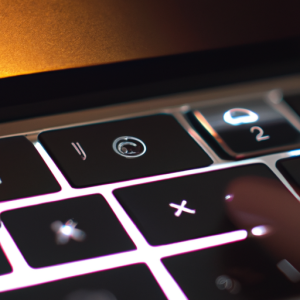In today’s digital age, cyber attacks are becoming increasingly sophisticated and frequent, posing a significant threat to businesses worldwide. As a result, companies are adopting new technologies and strategies to defend against these attacks and protect their valuable data. This article will explore the latest trends in cybersecurity, including the rise of ChatGPT, the importance of a human firewall, and the need for a strong cybersecurity culture. We will also discuss practical steps that businesses can take to enhance their security posture, such as monitoring and targeting, expecting a breach, scrutinising the supply chain, and securing IoT devices.
The New Cyber Risk: ChatGPT
ChatGPT, a language model developed by OpenAI, has recently gained attention for its potential to be used maliciously in cyber attacks. This AI-powered tool can generate human-like text, making it possible for cybercriminals to create convincing phishing emails, social engineering attacks, and disinformation campaigns. To counter this threat, companies must invest in advanced AI-driven security solutions that can detect and block such attacks in real-time.
Building a Human Firewall: The Importance of Cybersecurity Training
Employees are often considered the weakest link in a company’s cybersecurity defenses. To address this vulnerability, businesses must invest in comprehensive cybersecurity training programs that educate employees about the latest threats and best practices for protecting sensitive information. By creating a “human firewall,” companies can significantly reduce the risk of successful cyber attacks.
- Regularly update employees on new threats and attack vectors
- Provide hands-on training to help employees recognize and respond to phishing emails and other social engineering attacks
- Encourage employees to report suspicious activity and reward those who do so
- Implement strong password policies and require multi-factor authentication for accessing sensitive systems

Creating a Cybersecurity Culture
Establishing a strong cybersecurity culture within an organization is essential for maintaining robust defenses against cyber attacks. This involves fostering a sense of shared responsibility among employees, promoting open communication about security concerns, and ensuring that cybersecurity is a priority at all levels of the organization.
- Include cybersecurity as a key performance indicator for employees and managers
- Hold regular security awareness events and workshops
- Encourage collaboration between IT and other departments to address security challenges
- Ensure that senior leadership is actively involved in promoting and supporting cybersecurity initiatives
Monitor and Target: Proactive Cybersecurity Measures
Companies must adopt a proactive approach to cybersecurity by continuously monitoring their networks and systems for signs of compromise. This includes deploying advanced threat detection tools, such as intrusion detection systems, endpoint protection solutions, and security information and event management (SIEM) platforms. By actively targeting potential threats, businesses can identify and remediate vulnerabilities before they can be exploited by cybercriminals.
Always Expect a Breach: Preparing for the Inevitable
Despite the best efforts of businesses to protect their networks and data, breaches are still a very real possibility. Companies must adopt a mindset of expecting a breach and preparing for it accordingly. This includes developing and regularly updating incident response plans, conducting regular security audits, and investing in cyber insurance to mitigate the financial impact of a breach.
Scrutinise Your Supply Chain: The Importance of Third-Party Risk Management
Supply chain attacks, in which cybercriminals target a company’s suppliers or partners to gain access to its systems, are becoming increasingly common. In fact, nearly half of the UK’s manufacturers have experienced a cyber attack through their supply chain. To address this risk, businesses must implement robust third-party risk management processes, including:
- Conducting thorough security assessments of suppliers and partners
- Requiring suppliers to adhere to strict security standards and best practices
- Monitoring the security posture of third parties on an ongoing basis
- Establishing clear lines of communication for reporting and responding to security incidents
Securing IoT: Protecting the Growing Network of Connected Devices
The Internet of Things (IoT) is revolutionizing industries and creating new opportunities for innovation. However, the rapid proliferation of connected devices also presents significant security challenges. To secure IoT devices and networks, companies must:
- Implement strong authentication and access controls for IoT devices
- Regularly update device firmware and software to patch vulnerabilities
- Monitor IoT networks for signs of compromise and respond quickly to potential threats
- Segment IoT networks from other critical systems to limit the potential impact of a breach
Conclusion
As cyber attacks continue to evolve and become more sophisticated, businesses must adopt new technologies and strategies to defend against these threats. By investing in advanced security solutions, building a human firewall through employee training, fostering a strong cybersecurity culture, and taking proactive measures to protect their networks and data, companies can significantly reduce their risk of falling victim to a cyber attack. Additionally, by preparing for the inevitable breach, scrutinising their supply chain, and securing IoT devices, businesses can further strengthen their security posture and safeguard their valuable assets.




